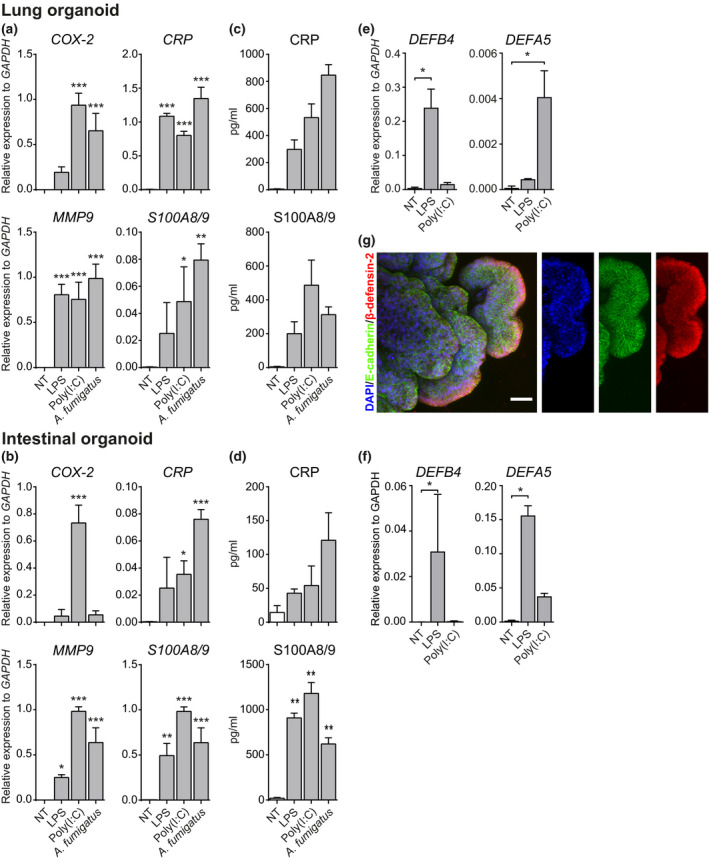Figure 3.

PRR ligands induce tissue‐specific inflammatory expression signatures in organoids. Triggering of lung (a) and intestinal (b) organoids with either LPS, poly(I:C) or A. fumigatus resulted in the expression of tissue‐specific inflammatory markers including COX‐2, CRP, MMP9 and S100A8/9. Results were confirmed at the protein level assessing CRP and S100A8/9 levels in lung (c) and intestinal (d) organoid supernatants by ELISA. qPCR analyses showed that the organoids differentially expressed genes encoding β‐defensin‐2 and β‐defensin‐5. While lung organoids mainly expressed β‐defensin‐2 (e), intestinal organoids expressed higher levels of β‐defensin‐5 (f). LPS and, to a lesser extent, poly(I:C) treatment induced upregulation of the transcripts encoding both the β‐defensins (e, f). Immunofluorescent labelling confirmed the polarised expression of β‐defensin‐2 by lung organoids (g). Results are expressed as the mean (SD) of three independent experiments. Data were analysed against NT via a Dunnett‐corrected one‐way ANOVA. *P ≤ 0.05, **P ≤ 0.01, ***P ≤ 0.001.
